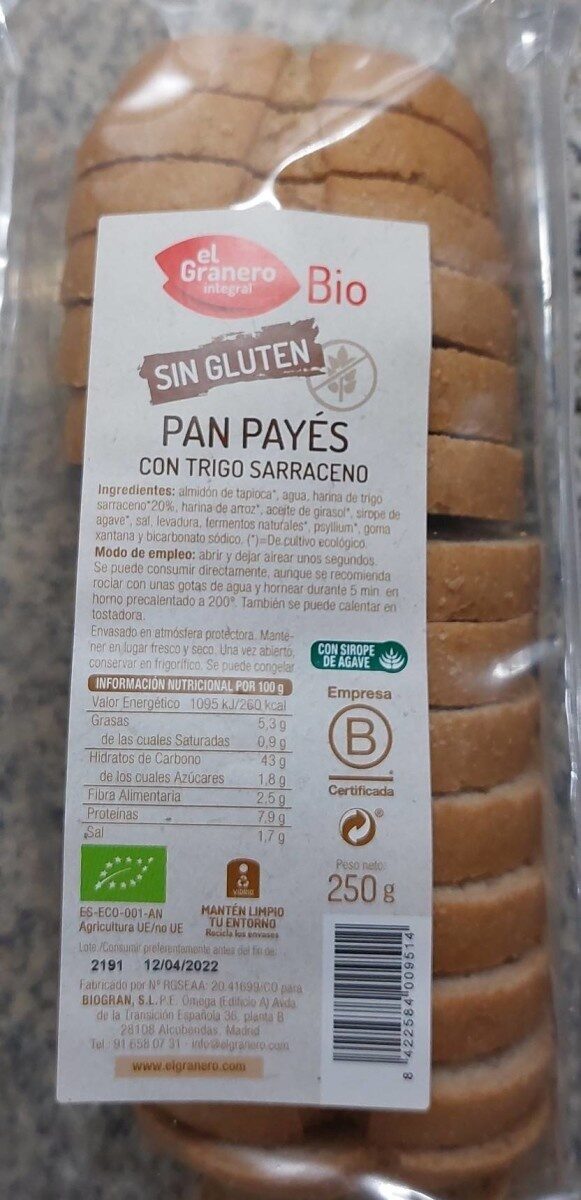Pan payes trigo sarraceno - el Granero integral - 250 g
Aquesta pàgina del producte no està completa. Podeu ajudar a completar-la editant-la i afegint-hi més dades a partir de les fotos ja disponibles, o fent-ne més amb l'aplicació de androide o iPhone / iPad. Gràcies!
×
Codi de barres: 8422584009514 (EAN / EAN-13)
Quantitat: 250 g
Marques: el Granero integral
Etiquetes, certificacions, premis:
Lliure de gluten, Orgànic, Orgànic UE, ES-ECO-001-AN
Països on es va vendre: Espanya
Matching with your preferences
Entorn
Empaquetament
Transport
Etiquetes
Report a problem
Fonts de dades
Producte afegit per kiliweb
Última modificació de la pàgina del producte per katam.
La pàgina del producte, també editada per raturibot, roboto-app, yuka.VlBBTkFwZ0QrZFVoeXYwM293bnM0OWhaNllTNFhHNldkdWNhSVE9PQ, yuka.YmJGZEhhUWNoc0k2dWM5bi9nem8ydGwzeDQ2Q1FqdXlKdGcwSVE9PQ, yuka.sY2b0xO6T85zoF3NwEKvlkZJfoLG_AiYMDDTtG7X-umjHsT6QfFd04rKD6s, yuka.sY2b0xO6T85zoF3NwEKvlkdHevzYmxvkNzzuwXS33vDQMqK1UYxI29OmFqs, yuka.sY2b0xO6T85zoF3NwEKvlkhEC8fGmQDZZy3uhm61ntOqBaHpW44t-tKhDqs.







